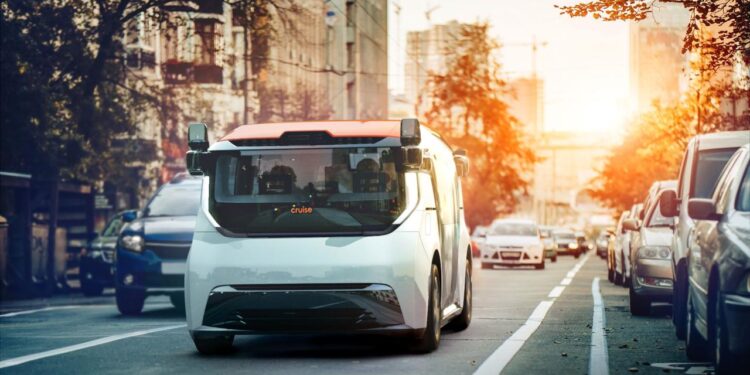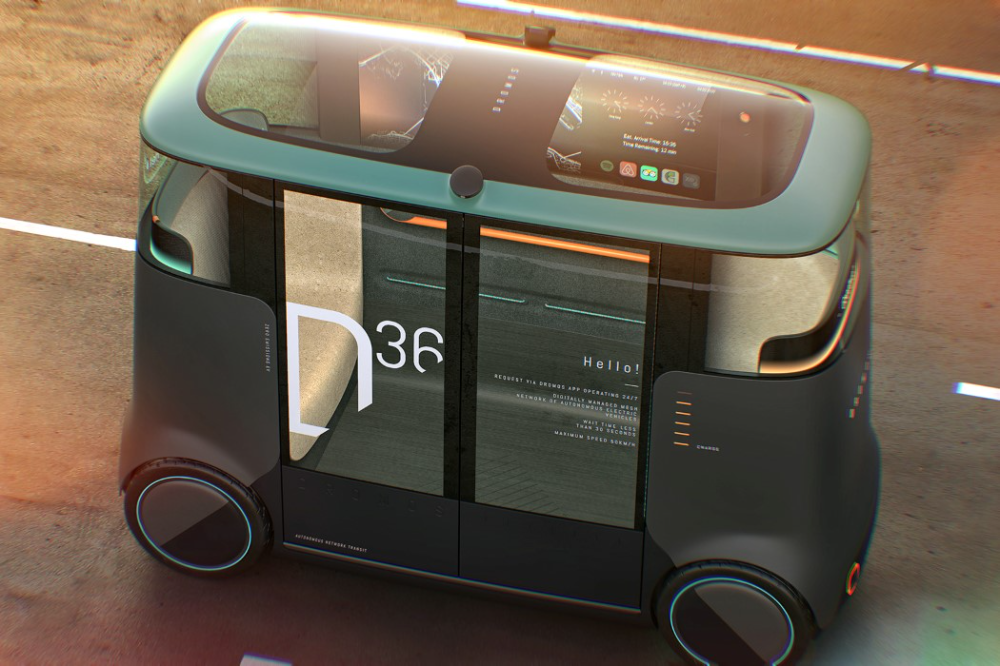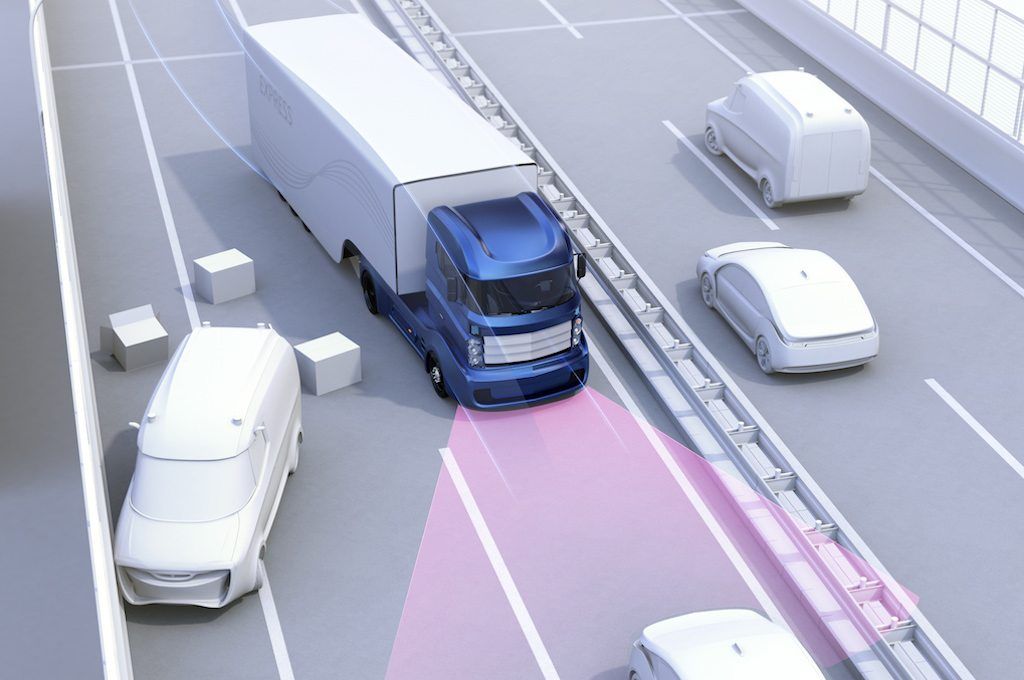The evolution of urban transportation has reached a pivotal moment with the advent of autonomous vehicles (AVs). As driverless technology continues to advance, it is revolutionizing how cities operate, offering a promising future filled with enhanced safety, improved traffic management, and sustainable mobility solutions. This comprehensive article delves into the rise of autonomous vehicles, their transformative impact on urban transportation, the challenges they face, and the future trends that could reshape our cities. With technology evolving at a rapid pace, understanding the dynamics behind AVs is crucial for urban planners, policymakers, and everyday commuters.
The Evolution of Urban Transportation
Urban transportation systems have long been the backbone of modern cities, continuously adapting to meet the demands of growing populations and technological advancements. Historically, cities relied on horse-drawn carriages, then transitioned to motorized vehicles, and eventually embraced public transportation systems like buses, trams, and subways. Today, we stand on the brink of another monumental shift: the integration of autonomous vehicles into urban mobility.
A. Historical Progression
Urban transportation has witnessed multiple phases of transformation:
A. Early Developments: The transition from animal-powered vehicles to the first motorized cars marked a significant leap in urban mobility.
B. Mass Transit Evolution: The rise of buses and trains in the early 20th century provided efficient alternatives for commuting.
C. Suburban Expansion: Post-World War II, increased car ownership led to the development of extensive highway networks and suburban sprawl.
D. Modern Innovations: Technological advancements have paved the way for ride-sharing, electric vehicles, and now, autonomous driving systems.
B. The Emergence of Autonomous Vehicles
Autonomous vehicles represent the next phase in this evolution. By leveraging sensors, artificial intelligence, and sophisticated algorithms, AVs can navigate complex urban environments without human intervention. This technology has the potential to drastically reduce accidents, minimize traffic congestion, and enhance the overall efficiency of urban transportation networks.
Understanding Autonomous Vehicle Technology
At the heart of autonomous vehicles lies an intricate network of hardware and software working in tandem to ensure safe and efficient operation. The technology behind AVs is a fusion of advanced sensors, machine learning algorithms, and robust communication systems.
A. Core Components of AV Technology
The successful operation of an autonomous vehicle relies on several key components:
A. Sensors:
- LiDAR: Uses lasers to create high-resolution 3D maps of the vehicle’s surroundings.
- Radar: Detects objects and measures their distance and speed, especially useful in adverse weather conditions.
- Cameras: Provide real-time visual data, essential for object recognition and lane detection.
- Ultrasonic Sensors: Aid in detecting nearby objects, crucial for parking and low-speed maneuvers.
B. Artificial Intelligence and Machine Learning:
- Data Processing: AI algorithms process vast amounts of sensor data to identify obstacles and make driving decisions.
- Predictive Analytics: Machine learning models predict the behavior of other road users, improving decision-making in dynamic environments.
- Continuous Learning: AV systems learn from millions of miles of driving data, refining their performance over time.
C. Connectivity and Communication:
- Vehicle-to-Vehicle (V2V): Allows cars to share information about speed, location, and road conditions, enhancing safety.
- Vehicle-to-Infrastructure (V2I): Enables communication between vehicles and traffic management systems to optimize traffic flow.
- Cloud Computing: Provides the computational power needed to process real-time data and update algorithms continuously.
B. Operational Levels of Autonomy
Autonomous vehicles are categorized based on their level of self-driving capabilities, ranging from Level 0 (no automation) to Level 5 (full automation). Currently, most commercially available vehicles operate at Level 2 or Level 3, where some functions are automated, but human intervention remains necessary under certain conditions. The ultimate goal is to reach Level 5, where vehicles can navigate complex environments without any human input.
Transformative Impact on Urban Transportation
Autonomous vehicles have the potential to reshape urban transportation systems in profound ways. Their integration into city infrastructure promises numerous benefits that extend far beyond the convenience of self-driving cars.
A. Enhanced Safety
One of the most compelling advantages of AVs is the potential to significantly reduce traffic accidents. Human error is responsible for the vast majority of crashes on our roads. By eliminating driver fatigue, distraction, and impairment, autonomous vehicles can create a safer transportation environment.
A. Accident Reduction:
- Data-Driven Insights: Studies indicate that AVs could reduce accidents by up to 90% due to their precise sensor systems and rapid response times.
- Predictive Analytics: By predicting potential hazards, AVs can take preventive actions that human drivers might overlook.
B. Emergency Response:
- Faster Reaction Times: Autonomous systems react in milliseconds, crucial for avoiding collisions and mitigating accidents.
- Integrated Communication: AVs can alert emergency services instantly in the event of an incident, improving response times and potentially saving lives.
B. Improved Traffic Management
The integration of autonomous vehicles into urban transportation networks can lead to more efficient traffic management. By communicating with one another and with infrastructure, AVs can optimize driving patterns, reduce congestion, and improve fuel efficiency.
A. Optimized Routing:
- Real-Time Data: Autonomous systems use real-time traffic data to select the most efficient routes.
- Dynamic Adjustments: These vehicles can adjust their routes on the fly in response to changing road conditions, accidents, or congestion.
B. Platooning:
- Close-Formation Driving: Autonomous vehicles can travel in close, coordinated groups known as platoons, reducing aerodynamic drag and improving fuel economy.
- Increased Road Capacity: Platooning enables more vehicles to travel safely on the road simultaneously, effectively increasing road capacity.
C. Environmental Benefits
Autonomous vehicles contribute to environmental sustainability by promoting energy efficiency and reducing emissions. With optimized driving patterns and reduced congestion, AVs have the potential to lower the carbon footprint of urban transportation.
A. Energy Efficiency:
- Optimized Acceleration and Braking: AVs minimize energy waste through smooth acceleration and braking, leading to improved fuel efficiency.
- Integration with Electric Vehicles: Many autonomous systems are being developed in conjunction with electric vehicle technology, further reducing reliance on fossil fuels.
B. Reduced Emissions:
- Lower Congestion: Efficient traffic management results in fewer idling vehicles, decreasing greenhouse gas emissions.
- Sustainable Urban Planning: Autonomous vehicles can be integrated into broader smart city initiatives, promoting sustainable urban development.
Economic and Social Implications
The adoption of autonomous vehicles is not merely a technological revolution—it also carries significant economic and social implications for urban communities. The shift toward AVs can stimulate job creation, drive economic growth, and transform urban landscapes.
A. Economic Impact
A. Job Creation and Transformation:
- New Industries: The rise of AV technology is fostering the growth of new industries in software development, sensor manufacturing, and data analytics.
- Reskilling Opportunities: As traditional driving jobs evolve, there is a growing need for training and reskilling programs in areas such as fleet management and vehicle maintenance.
B. Cost Savings:
- Reduced Accident Costs: Fewer accidents mean lower healthcare and insurance expenses for individuals and businesses.
- Lower Operational Costs: Autonomous fleets can operate more efficiently than traditional vehicles, reducing maintenance and fuel costs.
C. Investment in Infrastructure:
- Smart City Development: Municipalities are increasingly investing in smart infrastructure, including dedicated AV lanes and upgraded communication systems, to support autonomous vehicle deployment.
- Public-Private Partnerships: Collaboration between governments and private companies is driving innovation and infrastructure improvements that benefit the entire urban ecosystem.
B. Social Benefits
A. Enhanced Mobility for All:
- Accessibility: Autonomous vehicles can provide mobility solutions for individuals who are unable to drive, including the elderly and people with disabilities.
- Inclusive Transportation: By offering on-demand transportation services, AVs can bridge the mobility gap in underserved communities.
B. Improved Quality of Life:
- Reduced Commute Stress: With driverless cars handling the complexities of traffic, commuters can utilize their travel time more productively or relax during their journeys.
- Urban Redevelopment: As the reliance on personal vehicles decreases, cities can repurpose parking spaces and roadways for green spaces, community hubs, and pedestrian zones.
Challenges and Limitations
Despite the many potential benefits, the transition to autonomous vehicles is not without its challenges. Numerous obstacles must be overcome to ensure that AV technology is safely and effectively integrated into urban transportation networks.
A. Technological Hurdles
A. Sensor Limitations:
- Environmental Factors: Sensors such as LiDAR and cameras can be affected by adverse weather conditions like heavy rain, fog, or snow.
- Hardware Failures: Ensuring the reliability of sensor systems over long periods is crucial to maintaining safety.
B. Software Complexity:
- Algorithmic Precision: Developing algorithms that can accurately interpret complex urban environments remains a significant challenge.
- Data Security: The vast amounts of data processed by AV systems make them potential targets for cyberattacks, necessitating robust security measures.
C. Integration Issues:
- Interoperability: Autonomous vehicles must be able to communicate seamlessly with existing infrastructure and other vehicles from different manufacturers.
- Standardization: The lack of standardized protocols for AV technology can hinder widespread adoption and integration.
B. Regulatory and Legal Challenges
A. Policy and Legislation:
- Framework Development: Governments must develop comprehensive regulatory frameworks that address the unique challenges posed by autonomous vehicles.
- Liability: Determining fault in accidents involving driverless cars raises complex legal questions that need clear resolution.
B. Privacy Concerns:
- Data Collection: The extensive data gathered by AV systems raises concerns over privacy and the potential misuse of personal information.
- Surveillance Risks: Balancing security with individual rights is critical when implementing monitoring and tracking systems.
C. Social Acceptance
A. Trust and Perception:
- Public Skepticism: Many people remain wary of relinquishing control to machines, and incidents involving autonomous vehicles can erode public trust.
- Educational Efforts: Comprehensive public education campaigns are necessary to build confidence in AV technology.
B. Ethical Considerations:
- Decision-Making Algorithms: The ethical implications of programming vehicles to make split-second decisions in unavoidable accident scenarios require careful consideration and public dialogue.
- Inclusivity: Ensuring that autonomous transportation solutions are accessible and beneficial to all segments of society remains a priority.
Integration of Autonomous Vehicles in Urban Planning
The successful adoption of autonomous vehicles depends on a holistic approach that integrates this technology into broader urban planning initiatives. Cities must evolve their infrastructure and policies to accommodate the unique demands of AVs.
A. Smart City Infrastructure
A. Dedicated Lanes and Zones:
- AV-Specific Lanes: Developing dedicated lanes for autonomous vehicles can enhance safety and improve traffic flow.
- Smart Intersections: Implementing sensor-based traffic signals that communicate with AVs can reduce congestion and prevent accidents.
B. Upgraded Communication Networks:
- 5G and Beyond: High-speed wireless networks are essential to support real-time data exchange between vehicles and infrastructure.
- Interconnected Systems: Creating an integrated network that links AVs with traffic management systems, emergency services, and public transportation can optimize overall urban mobility.
B. Policy and Regulatory Frameworks
A. Government Initiatives:
- Pilot Programs: Many cities have launched pilot programs to test autonomous vehicle technology, gather data, and refine regulations.
- Incentives: Providing incentives for companies investing in AV technology can accelerate adoption and innovation.
B. Collaborative Regulation:
- Public-Private Partnerships: Collaboration between municipal governments, private tech companies, and research institutions is key to developing effective policies.
- International Standards: As autonomous vehicles are a global phenomenon, harmonizing regulations across borders will facilitate smoother integration and technology transfer.
Economic and Environmental Benefits
Beyond the immediate improvements in safety and efficiency, the integration of autonomous vehicles offers profound economic and environmental benefits that can transform urban landscapes.
A. Economic Growth
A. Boosting Local Economies:
- Job Creation: The growth of the AV industry creates new employment opportunities in tech development, infrastructure maintenance, and service industries.
- Increased Investment: Urban areas that adopt autonomous vehicle technology can attract additional investments in related sectors, fueling broader economic development.
B. Reduced Operational Costs:
- Efficient Transportation Networks: By minimizing traffic congestion and reducing the frequency of accidents, cities can lower operational costs related to road maintenance and emergency services.
- Optimized Logistics: Autonomous vehicles can revolutionize logistics and delivery systems, lowering costs for businesses and enhancing service reliability.
B. Environmental Sustainability
A. Lower Emissions:
- Efficient Driving Patterns: The optimized algorithms in AVs lead to smoother driving patterns, reducing fuel consumption and lowering emissions.
- Electric Integration: With a growing shift towards electric autonomous vehicles, cities can further reduce their carbon footprint.
B. Urban Green Spaces:
- Reimagined Infrastructure: As reliance on personal vehicles declines, cities have the opportunity to repurpose parking areas and unused roadways into parks and recreational spaces.
- Enhanced Air Quality: Reduced vehicular emissions contribute to improved air quality and overall public health.
Future Trends in Autonomous Urban Mobility
The journey of autonomous vehicles is just beginning. Future trends promise to further integrate AV technology into the fabric of urban life, paving the way for more innovative, efficient, and sustainable cities.
A. Advancements in AI and Machine Learning
A. Enhanced Decision-Making:
- Adaptive Algorithms: Future AI systems will be able to adapt to ever-changing urban environments more efficiently.
- Predictive Maintenance: Machine learning will also enable vehicles to predict and address maintenance issues before they become problematic.
B. Personalized Mobility Solutions:
- User-Centric Designs: AV technology will evolve to offer customized transportation solutions that cater to individual commuter needs, from personalized routes to tailored in-vehicle experiences.
B. Increased Connectivity
A. Smart Infrastructure:
- Real-Time Integration: The continued development of smart city infrastructure will enable seamless integration between autonomous vehicles and urban systems, improving efficiency and safety.
- Data-Driven Urban Planning: Enhanced data collection and analytics will empower city planners to design more responsive and sustainable transportation networks.
B. Global Collaboration:
- Standardized Protocols: International collaboration on autonomous vehicle standards will foster smoother integration and interoperability, benefiting cities worldwide.
- Cross-Border Innovations: Sharing of best practices and technological breakthroughs across borders will accelerate advancements in urban mobility.
C. Shifts in Urban Design
A. Redefining Cityscapes:
- Reduced Parking Needs: With the rise of autonomous fleets, cities can reallocate space previously dedicated to parking to other community-enhancing purposes.
- Dynamic Roadways: Future urban designs may incorporate dynamic road systems that can adjust based on real-time transportation demands.
B. Integration with Public Transit:
- Seamless Intermodal Transport: Autonomous vehicles will complement traditional public transportation, offering first-mile and last-mile solutions that create a seamless travel experience for urban dwellers.
- Sustainable Commuting: Combining AV technology with eco-friendly transit options will contribute to greener and more efficient cities.
The Societal Impact of Autonomous Vehicles
The widespread adoption of autonomous vehicles is poised to bring about significant societal changes. These innovations are not only reshaping transportation but also influencing urban culture, social interactions, and overall quality of life.
A. Shifting Lifestyle Patterns
A. Changing Commute Experiences:
- Productive Travel Time: With the burden of driving removed, passengers can use commute time for work, leisure, or rest, significantly enhancing quality of life.
- Enhanced Connectivity: Autonomous vehicles offer improved connectivity, enabling passengers to remain engaged with digital content and communication during travel.
B. Reimagining Workspaces:
- Mobile Offices: The concept of a mobile office is emerging, with AVs equipped with workstations that allow commuters to be productive on the move.
- Flexible Schedules: Reduced travel stress may encourage more flexible work arrangements, contributing to a healthier work-life balance.
B. Urban Social Dynamics
A. Increased Accessibility:
- Mobility for All: Autonomous vehicles promise increased accessibility for those unable to drive, including the elderly and disabled, fostering inclusivity in urban mobility.
- Community Connectivity: As AVs facilitate smoother transportation, communities can experience improved access to social services, education, and cultural events.
B. Redefining Public Spaces:
- Urban Redevelopment: With a decrease in private car usage, cities can redesign public spaces to enhance pedestrian zones, recreational areas, and community centers.
- Cultural Shifts: The transformation in transportation habits may lead to new cultural norms centered around shared mobility and sustainability.
Challenges to Overcome
While the promise of autonomous vehicles is immense, several challenges must be addressed to ensure a smooth transition to a driverless future.
A. Technological and Infrastructure Limitations
A. System Reliability:
- Robust Testing: Ensuring that autonomous systems perform reliably in diverse urban conditions requires extensive testing and continuous improvement.
- Integration with Legacy Systems: Upgrading existing infrastructure to support AV technology presents logistical and financial challenges.
B. Cybersecurity Concerns:
- Data Protection: The interconnected nature of AVs makes them vulnerable to cyberattacks, emphasizing the need for robust security measures.
- Privacy Issues: Safeguarding the vast amounts of data collected by autonomous systems is essential to protect individual privacy.
B. Regulatory and Ethical Considerations
A. Developing Comprehensive Regulations:
- Government Oversight: Policymakers must craft regulations that balance innovation with safety, ensuring that autonomous vehicles are integrated responsibly.
- Liability Frameworks: Establishing clear legal frameworks for accident liability in driverless car scenarios is critical.
B. Ethical Dilemmas:
- Decision Algorithms: The moral decisions embedded within AV algorithms, particularly in emergency scenarios, require ethical scrutiny and public discourse.
- Equitable Access: Ensuring that the benefits of autonomous technology are accessible to all segments of society remains a vital concern.
Conclusion
Autonomous vehicles are ushering in a new era of urban transportation, redefining the way cities function and how individuals commute. With the promise of enhanced safety, optimized traffic management, and a reduced environmental footprint, AV technology is set to transform our urban landscapes profoundly. However, the journey toward a driverless future comes with significant challenges, including technological hurdles, regulatory complexities, and ethical considerations.
As we navigate this transformative period, collaboration among technology developers, city planners, regulators, and the public is essential. By embracing innovation and addressing challenges head-on, we can create a future where autonomous vehicles not only improve urban mobility but also contribute to a more sustainable, inclusive, and efficient society.
The integration of autonomous vehicles into urban infrastructure is more than just a technological upgrade—it is a paradigm shift that has the potential to redefine our cities and our way of life. As we continue to explore and refine this groundbreaking technology, the promise of safer streets, reduced congestion, and enhanced quality of life becomes increasingly attainable. The future of urban transportation is here, and it is autonomous.












